
祈りの言葉 2004年/松崎 忠男
水俣病患者・遺族代表 「祈りの言葉」
Minamata Disease Patient and Bereaved Family Representative’s “Words of Prayer”
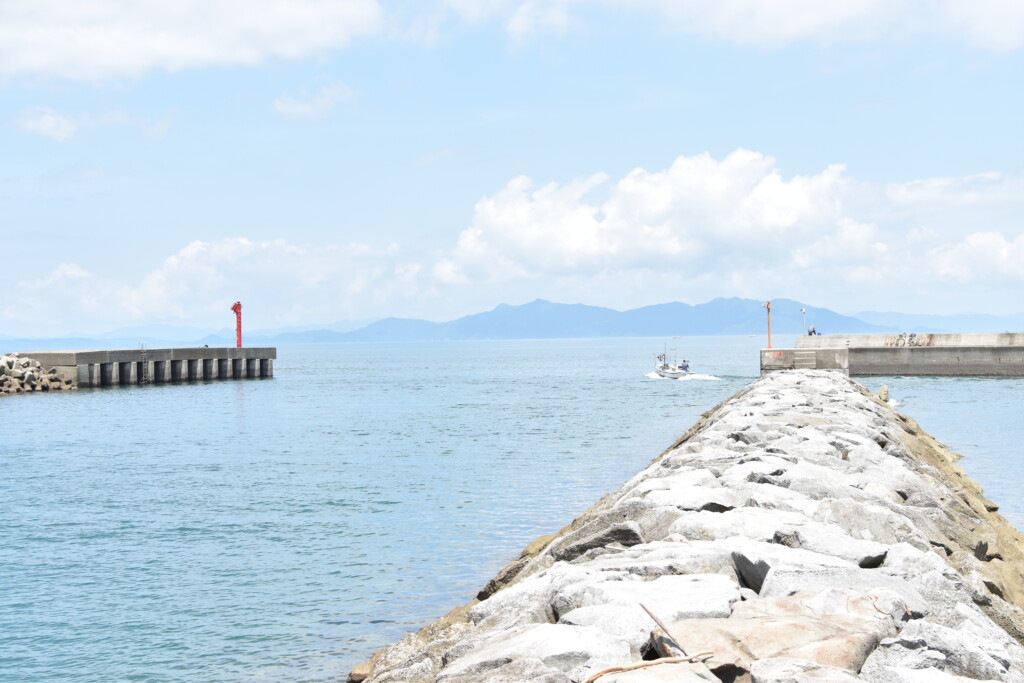
本日、ここに平成十六年度の水俣病犠牲者の慰霊式にあたり、祈りの言葉を申し上げます。振り返ってみますと、この場では語り尽くせぬ、色々なことが思い出されます。
Today, on the occasion of the 2004 memorial service for the victims of Minamata disease, I would like to say a few words of prayer. When I look back, I remember many things that I can’t even fully describe here.
私は、故川本輝夫氏の後を受け、チッソ水俣病患者連盟の委員長として、ここ水俣メモリアルに立つようになり、今回が五年目となります。初めて慰霊式に参列した時に感じたことは、「この地に立ち、昔を偲び、見渡せば、どこへ消えたか、水俣の海」であります。
半世紀前、あのきれいな海と豊かな漁場がいつの間にか、毒の海へと変わっていったのであります。忘れもしません。魚が売れなくなり、生活に困り果てた不知火海沿岸漁民数千人は、昭和三十四年十一月二日に、チッソに対し、補償及び汚水の排水を止めるよう求めて、抗議を行ないました。しかし、チッソも行政も排水を止めることはなく、その時の無念さは、計り知れないものがありました。
 This is the fifth year that I have come to stand at the Minamata Memorial as the chairman of the Chisso Minamata Disease Patients’ Federation, following in the footsteps of the late Teruo Kawamoto. When I attended the memorial service for the first time, standing here, remembering the past, looking around, I wondered where the sea of Minamata had disappeared to. Half a century ago, those clean water and rich fishing grounds were turned into a sea of poison before we knew it. I will never forget this. On November 2, 1959, thousands of fishermen along the coast of the Shiranui Sea, who were desperately trying to make their living because they could no longer sell their fish, protested against Chisso, demanding that the company pay compensation and stop discharging wastewater. However, neither Chisso nor the government would stop the discharge of water, and our disappointment at that time was indescribable.
This is the fifth year that I have come to stand at the Minamata Memorial as the chairman of the Chisso Minamata Disease Patients’ Federation, following in the footsteps of the late Teruo Kawamoto. When I attended the memorial service for the first time, standing here, remembering the past, looking around, I wondered where the sea of Minamata had disappeared to. Half a century ago, those clean water and rich fishing grounds were turned into a sea of poison before we knew it. I will never forget this. On November 2, 1959, thousands of fishermen along the coast of the Shiranui Sea, who were desperately trying to make their living because they could no longer sell their fish, protested against Chisso, demanding that the company pay compensation and stop discharging wastewater. However, neither Chisso nor the government would stop the discharge of water, and our disappointment at that time was indescribable.
そして、この頃から私の身体の状態も急変しました。まだ、三十歳というのに、腰が痛く、しびれを感じました。しかし、当時はまだ、水俣病の認定申請をする人は少なく、漁協も「患者が出れば魚が売れなくなる。」と心配して、役員を通じて申請を遠慮させていました。私もまた、「もし、自分が水俣病となったら、子ども達の縁談にさしつかえるのではないか。魚が売れなくなり、生活に影響がでるのではないか。」と考えて、申請しませんでした。
ようやく昭和四十八年に申請し、認定されましたが、もう治ることがない病気と診断されたのは、大変なショックでした。「ひょっとすると、重症患者になり、仕事もできず生活がめちゃくちゃになるのではないか。幼い子ども達はどうなるのだろうか。」と、不安が次々におそってきて、寝ることもできませんでした。その後、けいれん発作がおきるようになり、みずおちのあたりからのどや肩まで、ひどいしびれが二十分以上も続きます。しかし、子ども達の行く末のためにも、病に伏せることはできず、川本輝夫氏と共に、未認定患者の救済を求めて支援に参加した訳であります。
 It was around this time that my physical condition suddenly changed. I was only thirty years old, but I felt pain and numbness in my lower back. However, in those days, there were still few people who applied for Minamata disease patient certification, and the fishermen’s association was worried that if a fisherman was diagnosed with the disease, they would not be able to sell fish. So they discouraged fishermen from applying for the patient certification, through their board members. I myself wondered, “If I should be diagnosed with Minamata disease, it may affect my children’s marriage, I also would not be able to sell fish, and it would affect my living”. I thought so and did not apply.
It was around this time that my physical condition suddenly changed. I was only thirty years old, but I felt pain and numbness in my lower back. However, in those days, there were still few people who applied for Minamata disease patient certification, and the fishermen’s association was worried that if a fisherman was diagnosed with the disease, they would not be able to sell fish. So they discouraged fishermen from applying for the patient certification, through their board members. I myself wondered, “If I should be diagnosed with Minamata disease, it may affect my children’s marriage, I also would not be able to sell fish, and it would affect my living”. I thought so and did not apply.
I finally applied for certification in 1973 and was granted it, but it was a great shock to be diagnosed with a disease that would never be cured. I wondered if I would become a serious patient, unable to work and my life would be a mess. What will happen to my young children? The anxiety kept coming, and I couldn’t sleep. After that, I started to have seizures, and I had severe numbness that lasted for more than 20 minutes, from my lumbar region to my throat and shoulders. However, for the sake of the children’s future, I could not lie down in sickness and joined with Mr. Teruo Kawamoto to support the efforts to save the uncertified patients.
五十年経過して、ようやく「水俣病の経験と教訓」を伝えるため、昨年三月に、中国の天津市において行なわれた「水俣病経験の普及啓発セミナー」に参加し、我々の経験を話し、中国においての水銀汚染を今の内に防止するよう訴えて参りました。また、昨年六月には、厚生労働省へ、「水銀濃度による魚介類の摂取制限」について、すぐに質問状を送りました。何故ならば、「私たちは、これ以上水銀を食わされては、たまったもんじゃない。」と思ったからであります。
私は思います。「水俣病でもっとも可哀想なのは、胎児性患者だ。」と。母親の胎内で有機水銀に汚染され亡くなった多くの子ども達もいます。人間の能力の多くを奪われて生まれてきた子ども達は、今でも言語を絶する苦労を続けています。彼らも、四十歳半ばになっています。彼らの人生を奪ったのは、いったい誰なのでしょうか・・・。
After 50 years, I finally participated in the “Seminar on the Learning and Awareness of the Experience of Minamata Disease” held in Tianjin, China last March to convey the “experience and lessons of Minamata disease”. We shared our experiences with the participants and appealed to them to prevent mercury pollution in China before it happens. In June last year, we also sent a letter of inquiry to the Ministry of Health, Labor and Welfare regarding “restrictions on the intake of fish and shellfish based on mercury levels”. Because we thought, “I can’t take any more mercury being fed to us”.
 I think the most pathetic part of Minamata disease is the fetal Minamata disease patients. There are also many babies who died from organic mercury contamination in their mothers’ wombs. The children of fetal Minamata disease were born deprived of many of their human abilities and are still suffering from unspeakable hardships. They are now in their mid-forties. Who took their lives away from them?
I think the most pathetic part of Minamata disease is the fetal Minamata disease patients. There are also many babies who died from organic mercury contamination in their mothers’ wombs. The children of fetal Minamata disease were born deprived of many of their human abilities and are still suffering from unspeakable hardships. They are now in their mid-forties. Who took their lives away from them?
私は、女島の人間ですが、女島の漁業は、網元を中心とする集団の漁業で、二~三十人の網子が五~六隻の船団を組んで、囲い網でカタクチイワシを捕っていました。集団で仕事をしていたので、今でも私ぐらいの歳の者は、当時のなごりで、気持ちが通じているところがあります。私は、これからも女島に住み、女島で暮らし、このような時代が二度と起きることのないよう心から念じ、これからも国内をはじめ、外国へも「水俣病問題」を訴えて参るつもりです。
最後に、犠牲者のご冥福をお祈りしまして祈りの言葉といたします。
I am from Meshima, and the fishing industry in Meshima was a collective fishery led by the netmasters. 20 to 30 netters formed a fleet of five to six boats and caught anchovies with enclosed nets. We worked in a group, and even now, people my age are still able to relate to each other in some ways because of the memories of those days. I will continue to live in Meshima and sincerely hope that such a tragedy will never happen again, and I will continue to appeal to people in Japan and abroad about the Minamata disease problem.
Finally, I would like to conclude my prayer by praying for the souls of the victims.
平成16年5月1日
May 1st, 2004
水俣病患者遺族代表 松崎 忠男
Tadao Matsuzaki
Minamata Disease Patients and Bereaved Family Representative
コメント ( 0 )
トラックバックは利用できません。











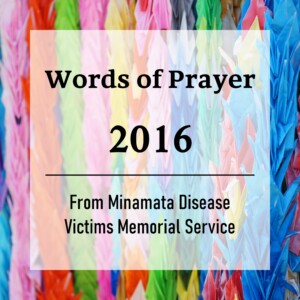
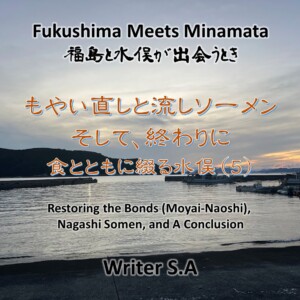
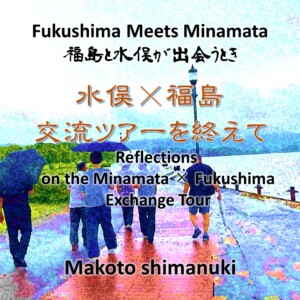
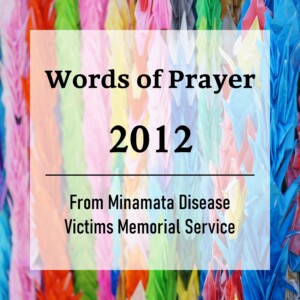
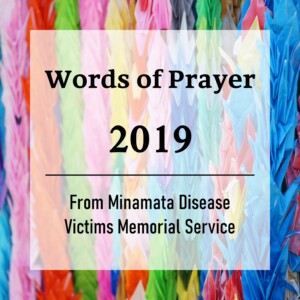



この記事へのコメントはありません。